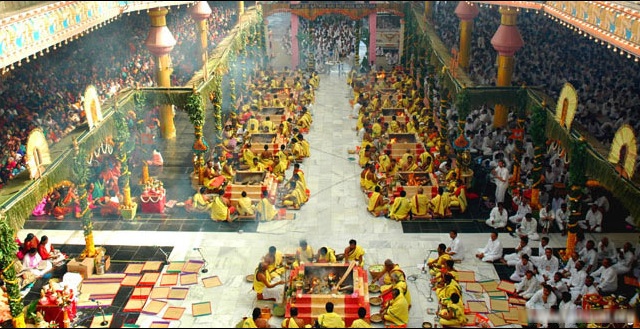
I offer oblation to my Supreme Self, so that my head, hands, feet, sides, back, belly, thighs, reproductive, procreative and secreting organs are purified.Ĥ. I offer oblation to my Supreme Self so that my speech, mind, eyes, ears, tongue, nose, organs of procreation, intellect and thought are purified!ģ. I offer oblation to my Supreme Self (God who dwells within me) in the hope that my five vital forces of life, Prana, Apana, Vyaana, Udana and Samaana are purified!Ģ. May I be luminous and pure, devoid of Rajas (mode of passion) and Tamas (mode of darkness)!ġ. Now, imagine a fire burning in your heart. Sit comfortably, close your eyes and breathe easily. You can chant the English version or the original mantras in Sanskrit. It is a sincere request to our Supreme Self to help us purify our body, mind and soul.īelow is the English translation of the mantras used in this Homam. However, we need to be aware that it strengthens our Viveka (ability to discriminate between right and wrong) and Vairagya (ability to remove our senses from pleasures) and it produces Virakti (disinterest in temporary pleasures of this world). This Homam is not only meant for spiritual aspirants or monks who wish to renounce everything and take up Sanyasa. It also contains sacred mantras from the Mahanarayanopanishad. This Homam is typically performed on Shivaratri day each month including the Maha Shivaratri. Once he is purified by means of this Homam, he is fit to offer himself as a sacrifice to his Supreme Self.ĭue to its purifying nature, the Homam is also performed to make Vibhuthi (holy ashes) from cow dung. It is also known as the ‘death rite’ because upon performing it, the spiritual aspirant is considered dead with regards to his previous life/lives and with regards to all his accumulated karmas. This Homam is an important step for those aiming for Sanyasa Deeksha (initiation to an ascetic life). This Homam is generally performed by Hindu monks (Sadhus) who have taken an oath to renounce this world and take up Sanyasa (a life of total renunciation and asceticism). This is why in Vedic tradition Viraja Homam is also known as the ‘ultimate’ or the ‘final’ fire oblation. This Homam helps us cultivate our Sattvik Guna. Only, the Sattvik Gunas can help us transcend ourselves to a state of supreme consciousness, when one realizes that he/she is Gunateetha (devoid of any Gunas). This Homam gets rid of our Tamasic Gunas. The ‘Tamasic Guna’ causes ignorance and darkness. This Homam helps us reduce our Rajasic Gunas and removes the desires of a person and encourages him to renounce his actions and their consequences.
#Viraja homa mantra pdf driver#
Rajas or Rajasic Guna stands for passion and is the main driver for all our actions and desires.


The word is closely related to the Sanskrit word ‘Rajas’, which is one of the three Gunas (attributes) in man.
#Viraja homa mantra pdf free#
‘Viraja’ is a Sanskrit word that means pure, or free from dust, and to be devoid of passion. This fire ritual or Homam is known as the ‘Viraja Homam’. But there is a fire ritual that can take us away from seeking materialistic pleasures. Generally, Homams are performed to bring materialistic benefits to oneself by pleasing the different Hindu deities. Every ritual, every prayer, every chant is bringing an inner positive transformation within us. Until we remain ignorant, we are unable to see their internal spiritual effect on us, and so, we assume that all these are mere external rituals. One such powerful way of getting rid of Karmas is to perform Yagya.Įvery fire ritual/oblation into the fire (Yagya/Havan/Homam) that we perform in the external world is simultaneously being performed within our spiritual body. Only then can you attain the pure blissful state and realize your true luminous Self (God). In order to liberate yourself from your Karmas, you must get rid of all your Karmas, positive and negative.

‘Karma’ is a Sanskrit word that has a twofold meaning: it means action as well as the particular result or consequence of that action. Think of those compassionate deeds that you have done for others, some intentionally and some without your knowledge. Similarly, we also perform so many good Karmas. One cannot even imagine the heap of negative karmas that are accumulated everyday as a result of all our misdeeds. All these form a part and parcel of our so-called petty ‘life’ on earth. As human beings, we are susceptible to many flaws, such as anger, hatred, jealousy and greed.

While eating, we destroy so many organisms, while walking, we hurt and destroy so many organisms, while breathing, we inhale so many organisms and destroy them. Viraja Homam – The Final Fire Oblation – Aiming for Sanyasa Deeksha Daiwik Hotels | OctoViraja HomamĪ fire ritual that is not just for monks!


 0 kommentar(er)
0 kommentar(er)
